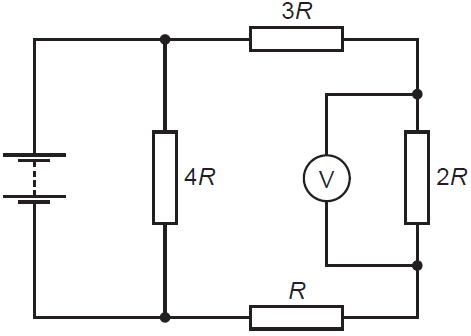- Messages
- 510
- Reaction score
- 607
- Points
- 103
Current is unchanged because it's connected with the fixed resistor which will have a different reading as compared to the one with the variable one as they're connected in parallel and the reading of the voltmeter decreases because there's an increase in resisitance leading to a decrease in the current in this part of the circuit. thus reducing the Pd as well.
Someone please explain why C??










